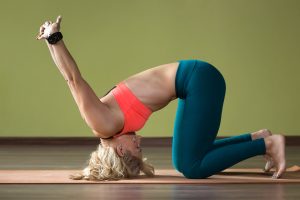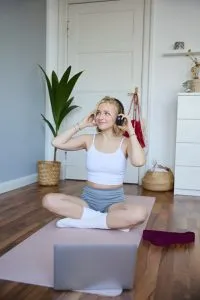Let’s Get Real About Yoga Mat Thickness
Ever plopped down on your mat for a long savasana and thought, “Wow, this thing feels like a marshmallow… or maybe a slab of concrete”? You’re not alone.
When I first started practicing yoga, I assumed the thicker the mat, the better. More cushion, less pain—seems logical, right? But a few wobbly Warriors and a sore wrist later, I started questioning that assumption. And that’s where the myth-busting begins.
In this guide, we’re going to dive deep (but comfortably!) into the yoga mat thickness myths that confuse even seasoned yogis. Whether you’re brand new or have been teaching for years, we’ll unravel what really matters when choosing the right yoga mat thickness.
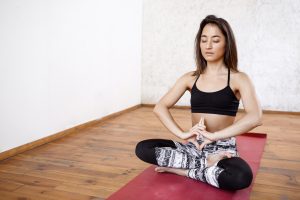
The Myth – Thicker Mats Are Always Better
Understanding Yoga Mat Thickness Myths
It’s easy to see why this idea took hold. We associate thickness with comfort. If you’ve ever kneeled on a hardwood floor, you know exactly why some people reach for the plushest mat in the store.
But here’s the catch: thicker doesn’t always mean better—especially when it comes to stability, balance, and alignment.
Imagine doing Tree Pose on a mattress. It’s soft, yes, but are you stable? Not at all. That’s essentially what’s happening when your mat is too thick for the type of yoga you’re practicing.

Choosing the Right Yoga Mat Thickness – What to Consider
There’s no one-size-fits-all here (pun intended). Let’s walk through how to decide what’s right for you.
1. Type of Yoga Practice
- Hatha, Vinyasa, or Power Yoga? Go with a 4-6mm mat. You’ll want some padding but also a grounded, stable base.
- Restorative or Yin Yoga? You might enjoy 6mm+ for more cushioning, especially if you’re holding poses for long periods.
- Hot Yoga? Thickness matters less than grip—look for non-slip surfaces and consider layering with a towel.
- Travel Yoga? Go light and compact with 1-3mm travel mats. They roll up tight and fit in carry-ons easily.
2. Your Body’s Needs
If you’ve got joint sensitivity (hello, cranky knees or sensitive wrists), extra padding can help. But beware of the squish factor.
I once taught a student recovering from a knee injury who brought in a 10mm foam mat. Sounds comfy, right? But she kept wobbling in standing poses. We switched to a 5mm mat with high-density rubber—it made all the difference.
Pro tip: Look for dense foam or natural rubber mats that offer support without too much give.
3. Surface You’re Practicing On
Practicing on carpet? You can probably go thinner. On hardwood or tile? You’ll want a bit more protection.
4. Portability
The thicker the mat, the heavier it gets. If you’re carrying it on your back or biking to class, lighter is better.

Benefits of Different Yoga Mat Thicknesses
Thin Mats (1-3mm)
- Ideal for travel or those who like to feel the floor
- Great for balance poses
- Lightweight and easy to carry
Drawbacks:
- Less cushioning for joints
- Not ideal for long seated or floor-based sessions
Standard Mats (4-6mm)
- A happy medium—perfect for most styles
- Supports joints without being overly soft
- Widely available and beginner-friendly
Drawbacks:
- Can still feel too thin on hard surfaces
- Some brands vary in density
Thick Mats (6-10mm+)
- Extra comfort for knees and wrists
- Great for restorative, prenatal, or therapeutic yoga
- Helps when practicing on very hard floors
Drawbacks:
- Can compromise balance and stability
- Heavier and bulkier
- May wear unevenly over time
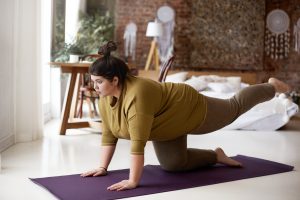
Yoga Mat Thickness Myths – Let’s Bust a Few More
Myth 1 – More Cushion = Better for Joints
Not always. Excessively soft mats can lead to joint misalignment, especially in weight-bearing poses. Sometimes firmer support is healthier.
Myth 2 – You Need a Super Thick Mat for Restorative Yoga
Actually, props like bolsters and blankets can do the job better. A high-quality 6mm mat may be enough if paired with the right accessories.
Myth 3 – All 6mm Mats Are the Same
Nope! A 6mm PVC mat and a 6mm natural rubber mat feel completely different. Density matters as much as thickness.
Myth 4 – Mat Thickness Doesn’t Impact Your Practice
Oh, but it does. A too-soft mat can make balance harder. A too-thin mat can make floor work painful. It’s all about finding your sweet spot.
How Yoga Mat Thickness Impacts Your Practice
Imagine trying to build a house on a trampoline. That’s what balancing poses feel like on a mat that’s too thick and squishy.
Your mat affects:
- Balance – Thicker mats reduce ground feedback.
- Joint Support – Thinner mats may lack protection.
- Grip – Some thicker mats slide or bunch up more easily.
- Alignment – Sinking too deep can change your body mechanics.
Bottom line? The right thickness helps your body feel safe, supported, and stable.
Real Talk – How I Found My Goldilocks Mat
After trying at least a dozen mats (yes, really), I landed on a 5mm high-density natural rubber mat. It wasn’t the thickest, fanciest, or cheapest—but it struck the right balance.
I’ve used it for hot yoga, yin classes, and even the occasional living room HIIT session. It’s been my mat for four years and counting.
What sets it apart?
- Doesn’t budge during flows
- Cushions my knees without making me wobble
- Easy to clean, even after sweaty sessions
Would it work for everyone? Maybe not. But that’s the point—finding your perfect mat is personal.

FAQs – Your Top Questions About Yoga Mat Thickness
Q1 – What is the best yoga mat thickness for beginners?
For most beginners, a 4-6mm mat is ideal. It offers just enough cushioning without sacrificing balance, helping you ease into poses safely.
Q2 – Can a mat be too thick for yoga?
Yes. If it’s too soft or thick, it can destabilize you in standing and balancing poses. A 10mm mat might feel plush but can cause you to sink or wobble.
Q3 – How do I know if my mat is too thin?
If you feel pain in your knees or tailbone during seated or kneeling poses, or if it feels like you’re practicing directly on the floor, your mat may be too thin. Consider a denser 5mm mat or adding a towel layer.
Q4 – Is there a difference between workout mats and yoga mats?
Absolutely. Workout mats are often thicker and more cushioned, meant for jumping or bodyweight exercises. Yoga mats prioritize grip, balance, and alignment.
Q5 – Do I need a special mat for hot yoga?
Yes. Look for mats with non-slip surfaces, or add a yoga towel on top. Thickness is less critical than traction in these sweaty sessions.
Final Thoughts – What Should You Do?
Choosing the right yoga mat thickness isn’t about following fads or assuming more is better—it’s about listening to your body, your practice, and your goals.
Ask yourself:
- What style of yoga do I practice most?
- Where do I practice—home, studio, carpet, hardwood?
- Do I need more joint protection or more balance support?
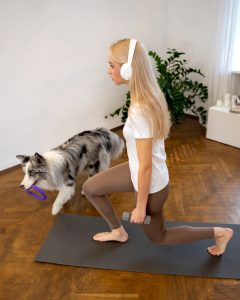
Ready to Upgrade Your Practice?
If you’re still hunting for your Goldilocks mat, check out our Top-Rated Yoga Mats Guide where we’ve reviewed and compared the best mats by thickness, material, grip, and user feedback.
Bonus: We also link to multiple sellers, so you can compare prices and shop from your preferred merchant.
Remember, your mat is more than just a rectangle—it’s your foundation. And a strong foundation? That’s the beginning of a powerful, joyful practice.
Namaste and happy mat hunting! 🙏

